Gigabyte Z68X-UD3H-B3 Review
by Brendan van Varik on July 11, 2011 7:01 AM EST- Posted in
- Gigabyte
- Motherboards
- Sandy Bridge
- Z68
Note: There is a pretty big issue with the shipping (F2) BIOS on the board I received. If any memory settings were chosen (including XMP) rather than left at auto, the board would not engage more than a 1x turbo mode, even in single threaded performance. This issue has been addressed, and Gigabyte suggest that users upgrade to the latest BIOS, available from their website.
The Touch BIOS – no Graphical UEFI
Gigabyte have yet to adopt a full graphical UEFI BIOS. In fact, they merely have a “hybrid” BIOS which adds support for 2.2TB+ hard drives. In order for the 2.2TB+ hard drives to be detected, you have to ‘activate’ them within Windows. You have to run a program to initialize the drives. For the rest, the layout is exactly like a five year old Gigabyte board I have laying around from the LGA775 age.
Unfortunately, this is about as interesting as it gets. It’s a shame that Gigabyte have yet to take on a full UEFI style but it may come in the not too distant future. On the plus side however, Gigabyte have put all of the features in their relative submenus that makes them easy to find. For example, all of the system clocks and overclocking features are located in the MB Intelligent Tweaker (M.I.T.) menu and the settings are under their respective menus in there too. This is relevant for all of the menus within this BIOS.
There are no options to change any of the system fan speeds within the BIOS. However, scrolling down in the PC Health Status part of the BIOS reveals a few options for the CPU fan control. When you select CPU Smart FAN Control and enable it, you can alter the CPU Smart FAN Mode. You can either let it automatically adjust the voltage of the fan or you can manually assign it. If you have a 3 pin fan, you can alter the voltage which will correspond to the speed of the fan or if you have a 4 pin fan, you can set it to PWM mode and the BIOS will take care of it for you. There are four different options which you can choose from whilst using the PWM function. They consist of Normal, Silent, Manual and Disabled.
The TOUCH BIOS from within Windows
Above is the software, which you can use to change absolutely everything in the BIOS from within Windows.
The only obvious issue I found with it is in the M.I.T Status section of this software. It only registers one DIMM no matter which slot it is in but it does register that you are using the correct amount of RAM which is slightly odd.
Overclocking
Just like other manufacturers, Gigabyte have their own software which allows you to overclock your system automatically from within the OS. However, they all vary and some do better than others. We tested out Gigabytes’ offerings before we fiddled and tweaked within the BIOS.
When the EasyTune6 software loads, it loads the Tuner menu by default. There are three different “Quick Boost” options you can choose which consist of a 3.6, 3.8 and 4.1GHz core speed and are labeled 1, 2 and 3 respectively. All three options were tested and proven stable but I will write about the level 3 variable. There are a few things to note here. The voltages set are far too high for the clock speed. A core voltage of 1.4v is set. This particular CPU only requires 1.34v for 4.3GHz. This means there will be excess heat which could be avoided by using less voltage. No Load Line Calibration (LLC) is set during this overclocking procedure, which means the voltage droops to 1.33v when the CPU is highly stressed.
Thankfully, on the RAM side of things it does a little better. The RAM is set to 1866MHz with X.M.P timings and voltages. Our RAM is rated at 2000MHz which isn’t available for selection in the BIOS. There are two options – either 2133MHz or 1866MHz. The safer choice of 1866MHz was chosen to try and eliminate any possible RAM stability issues.
Unfortunately, the CPU core voltage isn’t displayed correctly by CPUZ which means you have to use the EasyTune6 software, which seems to do a better job although I wouldn’t rely on it entirely. The vDroop on this board is something which needs to be addressed. In the BIOS, there are ten levels of LLC, one being the weakest and ten being the strongest. There is no description in the BIOS of how they affect the voltage. When you use no LLC at all, the vDroop on 1.4v can dip right down to 1.33v which is a significant change in voltage. However, when you use level 5, so in the middle of min and max, it will increase the voltage to 1.45v which is far too much again. Gigabyte really do need to sort this out.
Given that the EasyTune6 software only offers a 4.1GHz overclock which uses too much voltage, I was eager to get on and see how well the motherboard overclocks if you set the speeds and voltages on your own accord.
First of all, I tested to see if the CPU would be stable at 4.3GHz with 1.34v just like it is in other motherboard testing. It was semi stable; LLC had to be set to level 3 in order to obtain complete stability. The voltages peaked at 1.36v which isn’t too serious.
After deciding it was stable enough, I pushed on and attempted to find the highest clock speed which could be used to run our benchmarks. The maximum overclock achieved was 102.1x47 which isn’t too shabby at all. The BCLK isn’t as impressive as other motherboards but as you have an unlocked multiplier, you might as well just take advantage of it instead of messing around with the BCLK.
When you push the overclock a touch too far, it sometimes fails to recover from a bad OC without manually simulating the boot cycles. By this, I mean turning the PC on and off by the PSU and letting the board power itself back on. It only takes a few attempts. The motherboard is designed to copy data from the secondary BIOS chip to the first one when the overclock fails in order to recover itself. All this does is restore the BIOS defaults which allows you to either try again or try something different.


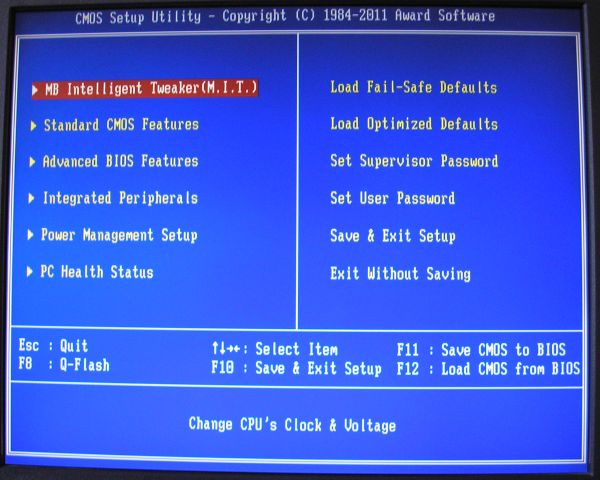
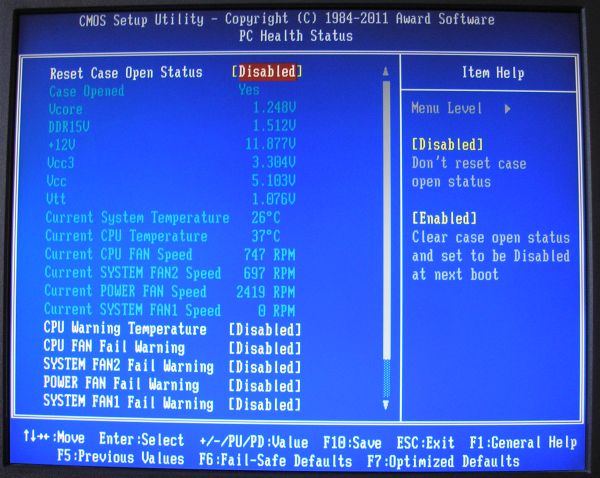






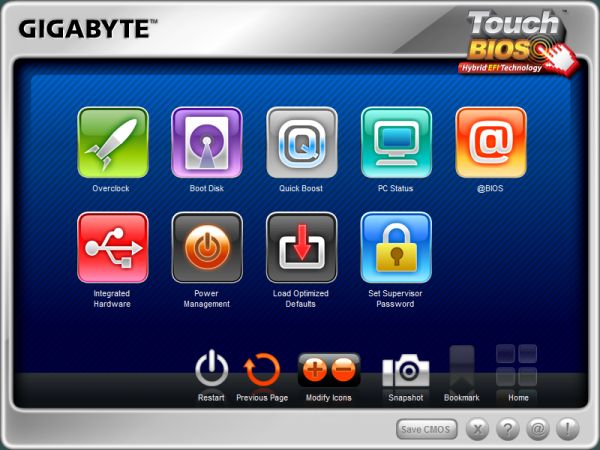
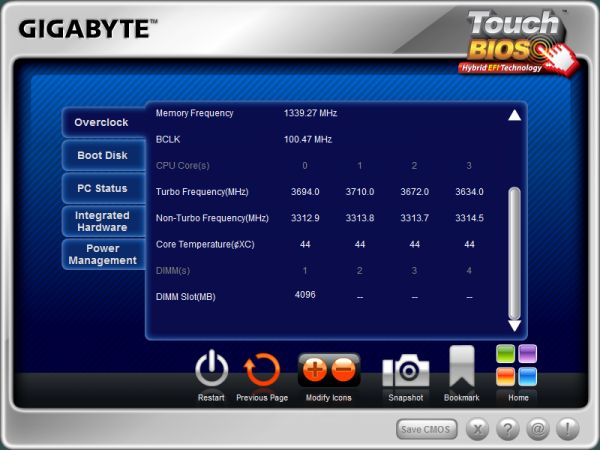
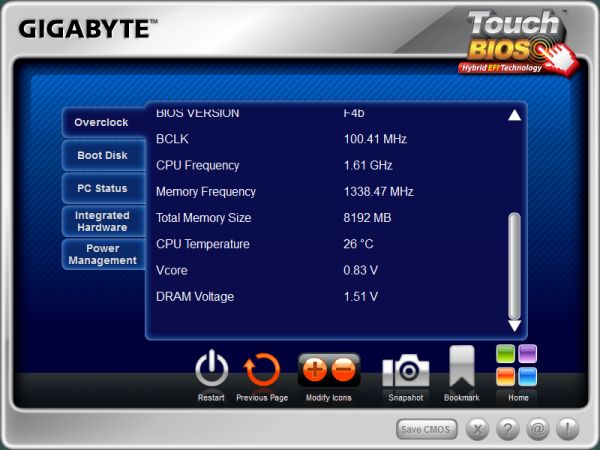














70 Comments
View All Comments
Meghan54 - Monday, July 11, 2011 - link
I have checked several publications, such as the MLA and APA manuals, and both are quite consistent with giving the recommendation that corp/company names be treated as singular entities, and has been this way for decades upon decades. Even going back to the grammar texts from the early 1950's shows this.....just happen to have some around from when my Mother taught school.Maybe you should check out some writing guides instead of depending upon "popular" and colloquial writing in magazines.
Exodus220 - Monday, July 11, 2011 - link
The Gregg Reference Manual, Ninth Edition, by William Sabin says that when using organizational names, treat them as either singular or plural (but not both). Ordinarily, it suggests you treat the name as singular unless you wish to emphasize the individuals who make up the organization. In that case, use the plural.Gregg uses these examples to make sure there’s subject-verb agreement:
Brooks & Rice has lost its lease. It is not looking for a new location. OR Brooks & Rice have lost their lease. They are now looking for…But NOT Brooks & Rice has lost its lease. They are now looking…
If the organization is referred to as “they” or “who,” use a plural verb with the company name. If the organization is referred to as “it” or “which,” use a singular verb.
Professor Charles Darling says, “The names of companies and other organizations are usually regarded as singular, regardless of their ending: ‘General Motors has announced its fall lineup of new vehicles.’ Try to avoid the inconsistency that is almost inevitable when you think of corporate entities as a group of individuals: ‘General Motors has announced their fall lineup of new vehicles.’”
Meghan54 - Monday, July 11, 2011 - link
No they're not. Corps. are treated as singular entities. Substitute for any corp's name, be it Intel, Gigabyte, Apple, et al, the word company, and you have your answer. You wouldn't say "The company have good products", would you?No, just like it's incorrect to say Intel have or Gigabyte have. A company, corporation, or any group is treated as a single entity. like Congress, Parliament, or any other cohesive group.
Learn English grammar.
mickyfinn - Wednesday, June 20, 2012 - link
I don't think so. Apparently, In the US and in England, Corporations apparently are treated as single nouns. This is correct as Corporations are viewed legally as single entities.I cite the following:
The Associated Press (ap.org) about us page http://www.ap.org/company/about-us: "The AP is one of the largest ... AP is neither privately held... AP employs the lastest..."
IBM press release http://www-03.ibm.com/press/us/en/pressrelease/379... entitled "IBM Completes Acquisition of Tealeaf Technology", first sentence: "ARMONK, N.Y. - 13 Jun 2012: IBM (NYSE:IBM) today announced IT (emphasis mine) has completed its acquisition of Tealeaf Technology, Inc., ..."
Financial Times website "about us": http://aboutus.ft.com/corporate-information/#axzz1... : "The FT IS... (emphasis mine)" and feel free to peruse any of their articles refering to corporations (or countries). All singular.
Oxford University Press release, http://www.ox.ac.uk/media/news_stories/2012/120614... entitled "Oxford Tops Times Good University Guide for 11th Year"
While the US and UK are not technically "most English-speaking countries", the English ostensibly invented the language and the US one the IP rights to it from them in a war in the 18th century.
mickyfinn - Wednesday, June 20, 2012 - link
oy... I mean "won". :(IanCutress - Monday, July 11, 2011 - link
I edited this article for Brendan - there's a UK/US split on whether a company should be singular or plural (I would cite web sources and style guides on this, but they are easy to find). I understand AT is a mainly US based web-site, and when concentrating to write in a US style it's frustrating to find that what both Brendan and I know is emphatically correct, others consider it totally wrong, and it sometimes creeps through unnoticed as a result. Our apologies.awaken688 - Monday, July 11, 2011 - link
Don't worry about it man. I personally prefer it be treated as a singular, especially when we are treating it as a single entity. But, I understand there are always going to be differences among English speaking countries. Just as someone was so sure of the horrible use of "an SSD" when in fact it is the correct use, people need to relax a little.MilwaukeeMike - Monday, July 11, 2011 - link
Everyone has their preferences...some we can argue over, some are just annoyances.. I personally hate the phrase 'that being said' (and its derivatives) because it's ambiguous and pointless, but I must be in the minority because of how often it's used.irreverence - Monday, July 11, 2011 - link
I'd not usually be bothered by something like this, and would generally find it to be fairly trivial, but upon reading the rest of this article it becomes incredibly clear that it is not fit for publishing and is in dire need of a proofreader. I do not know if Brendan's 1st language is English or not, but as his 1st article on the site this should really have been scrutinised by an editor before signing off on it.Aside from the issue with treating Gigabyte as a plural entity, here are just a few other issues with the writing that were immediately apparent upon reading:
- using the phrase "in my eyes" instead of "to my eyes"
- "with regards to" instead of "with regard to"
- "after comparing to" instead of "after comparing with"
- "one port which points out" instead of "one port that points out"
- "Gigabyte have put all of the features in their relative submenus that makes them easy to find." instead of "Gigabyte have put all of the features in their relative submenus which makes them easy to find."
- "it's in the center board" - "it's in the center of the board"
- "CPU, memory, graphics card(s) as well as..." instead of "CPU, memory and graphics card(s), as well as..."
Then there is the confusing inconsistency between the uses of "display port" and "DisplayPort".
Apart from all this, the whole article is littered with clumsy sentences. There are too many to quote directly, but by way of example:
"Unfortunately, the CPU core voltage isn’t displayed correctly by CPUZ which means you have to use the EasyTune6 software, which seems to do a better job although I wouldn’t rely on it entirely."
I'm sorry, but I expect higher standards of writing from this site. I don't blame the author directly, but the fact that this clearly hasn't been proofread is pretty bad.
The0ne - Monday, July 11, 2011 - link
People see it as a "trifle" but it really is annoying if used very often. It's breaks your train of reading/thought and eventually invokes the Hulk in anyone who cares :D But I've long trained myself to ignore such trifles as blogs, reviews and even news on the Internet are horrible to begin with. Now books are another matter :D